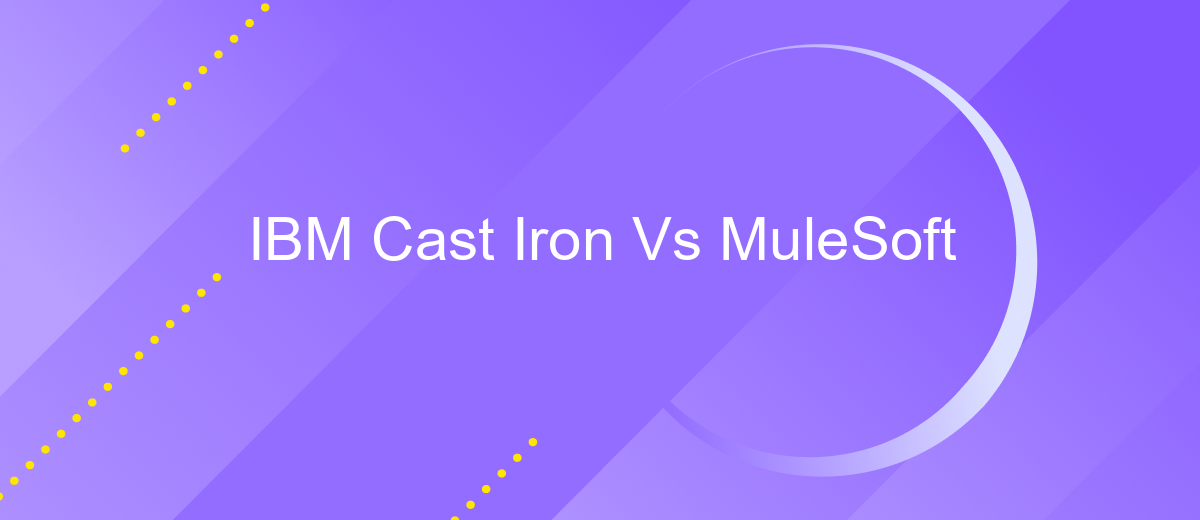IBM Cast Iron Vs MuleSoft
In the rapidly evolving landscape of enterprise integration, selecting the right platform is crucial for seamless connectivity and data flow. This article compares IBM Cast Iron and MuleSoft, two leading integration solutions, evaluating their features, performance, and suitability for various business needs. By understanding their strengths and limitations, organizations can make informed decisions to optimize their integration strategies.
Introduction
In today’s rapidly evolving digital landscape, businesses are increasingly relying on integration platforms to streamline their operations and enhance connectivity between various applications. IBM Cast Iron and MuleSoft are two prominent players in this domain, each offering unique features and capabilities to address diverse integration needs.
- IBM Cast Iron: Known for its robust cloud integration solutions, IBM Cast Iron simplifies the process of connecting on-premises and cloud applications.
- MuleSoft: Renowned for its comprehensive Anypoint Platform, MuleSoft provides a unified solution for API management, design, and deployment.
- ApiX-Drive: A versatile integration service that facilitates the connection of various applications without the need for coding, making it an excellent choice for businesses of all sizes.
Choosing the right integration platform can significantly impact your business efficiency and agility. In this article, we will compare IBM Cast Iron and MuleSoft, examining their features, benefits, and potential use cases to help you make an informed decision. Whether you are a small business or a large enterprise, understanding these platforms' strengths will guide you in optimizing your integration strategy.
Features and Functionality

IBM Cast Iron offers a robust set of features tailored for enterprise-level integrations, providing pre-built templates and connectors to facilitate seamless data integration across various systems. It supports real-time data synchronization and complex workflows, ensuring that businesses can maintain data integrity and streamline operations. Additionally, its user-friendly interface allows for quick deployment and minimal coding, making it accessible for IT teams of all skill levels.
MuleSoft, on the other hand, excels with its comprehensive API-led connectivity approach, enabling organizations to build scalable and reusable APIs. Its Anypoint Platform offers a unified solution for API management, design, and analytics, empowering businesses to create a cohesive integration strategy. MuleSoft's extensive library of connectors and templates, combined with its powerful data transformation capabilities, ensures efficient and secure data flow between applications. For those looking for an additional tool to simplify integrations, ApiX-Drive could be a valuable resource, offering straightforward automation and connectivity between various web services and applications.
Pricing and Licensing

When considering the pricing and licensing for IBM Cast Iron and MuleSoft, it's essential to understand the cost structures and what each platform offers. Both solutions provide robust integration capabilities, but their pricing models differ significantly.
- IBM Cast Iron: IBM Cast Iron offers a subscription-based pricing model. The cost can vary depending on the number of integrations, data volume, and specific enterprise needs. IBM also provides flexible licensing options, including perpetual licenses and cloud-based subscriptions.
- MuleSoft: MuleSoft operates on a subscription-based model as well. Pricing is typically based on the number of cores and the level of support required. MuleSoft offers different tiers of licensing, including Gold, Platinum, and Titanium, each with varying levels of features and support.
For businesses looking for additional integration capabilities, services like ApiX-Drive can be a valuable addition. ApiX-Drive simplifies the process of connecting various applications and automating workflows, making it a cost-effective solution for companies needing flexible integration options. By leveraging such services, organizations can enhance their integration strategies without incurring significant additional costs.
Use Cases and Case Studies

IBM Cast Iron and MuleSoft are both powerful integration platforms designed to streamline business processes. IBM Cast Iron is particularly strong in pre-built connectors and templates, making it ideal for businesses looking for quick deployment. MuleSoft, on the other hand, offers a more flexible and scalable solution, suitable for complex integrations across various environments.
Case studies for IBM Cast Iron often highlight its efficiency in integrating cloud applications with on-premises systems. For example, a retail company used IBM Cast Iron to connect its e-commerce platform with its CRM system, resulting in improved customer data management. MuleSoft, meanwhile, is frequently used in sectors requiring extensive API management and microservices architecture, such as healthcare and finance.
- A financial institution used MuleSoft to integrate legacy systems with new cloud applications, improving data accessibility and operational efficiency.
- A healthcare provider leveraged MuleSoft to create a unified patient data system, enhancing patient care and compliance with regulations.
- An e-commerce company utilized IBM Cast Iron to synchronize inventory data across multiple sales channels, reducing stock discrepancies.
Both platforms have their unique strengths and are chosen based on specific business needs. For businesses looking to simplify their integration processes, services like ApiX-Drive can offer additional support by providing automated workflows and pre-configured connectors, further enhancing the capabilities of IBM Cast Iron and MuleSoft.
Conclusion
In conclusion, both IBM Cast Iron and MuleSoft offer robust solutions for integration needs, each with its own strengths and unique features. IBM Cast Iron excels in providing simplified, out-of-the-box integration capabilities, making it an ideal choice for businesses looking for quick and efficient deployment. On the other hand, MuleSoft stands out with its extensive API management and flexibility, catering to more complex integration scenarios and offering a broader range of customization options.
Ultimately, the choice between IBM Cast Iron and MuleSoft depends on the specific requirements and resources of your organization. For those seeking an alternative or complementary solution, ApiX-Drive can also be considered. ApiX-Drive provides a user-friendly platform for automating and managing integrations, making it easier for businesses to connect various applications and services seamlessly. By evaluating the features and capabilities of each platform, businesses can make an informed decision that best aligns with their integration strategy.
FAQ
What are the primary differences between IBM Cast Iron and MuleSoft?
Which platform is better for cloud integrations?
How does the pricing compare between IBM Cast Iron and MuleSoft?
Can either platform handle real-time data integration?
Is there a simpler alternative for basic integration needs?
Time is the most valuable resource in today's business realities. By eliminating the routine from work processes, you will get more opportunities to implement the most daring plans and ideas. Choose – you can continue to waste time, money and nerves on inefficient solutions, or you can use ApiX-Drive, automating work processes and achieving results with minimal investment of money, effort and human resources.

